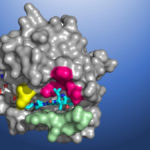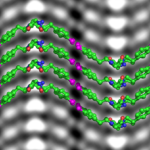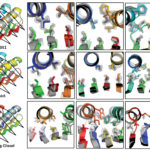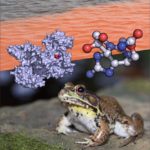A team of scientists led by Elizabeth Boatman at the University of Wisconsin Stout used X-ray imaging and spectromicroscopy performed at Berkeley Lab’s Advanced Light Source (ALS) to demonstrate how soft tissue structures may be preserved in dinosaur bones – countering the long-standing scientific dogma that protein-based body parts cannot survive more than 1 million years.
In their paper, now published in Scientific Reports, the team analyzed a sample from a 66-million-year-old Tyrannosaurus rex tibia to provide evidence that vertebrate blood vessels – collagen and elastin structures that don’t fossilize like mineral-based bone – may persist across geologic time through two natural, protein-fusing “cross-linking” processes called Fenton chemistry and glycation.








